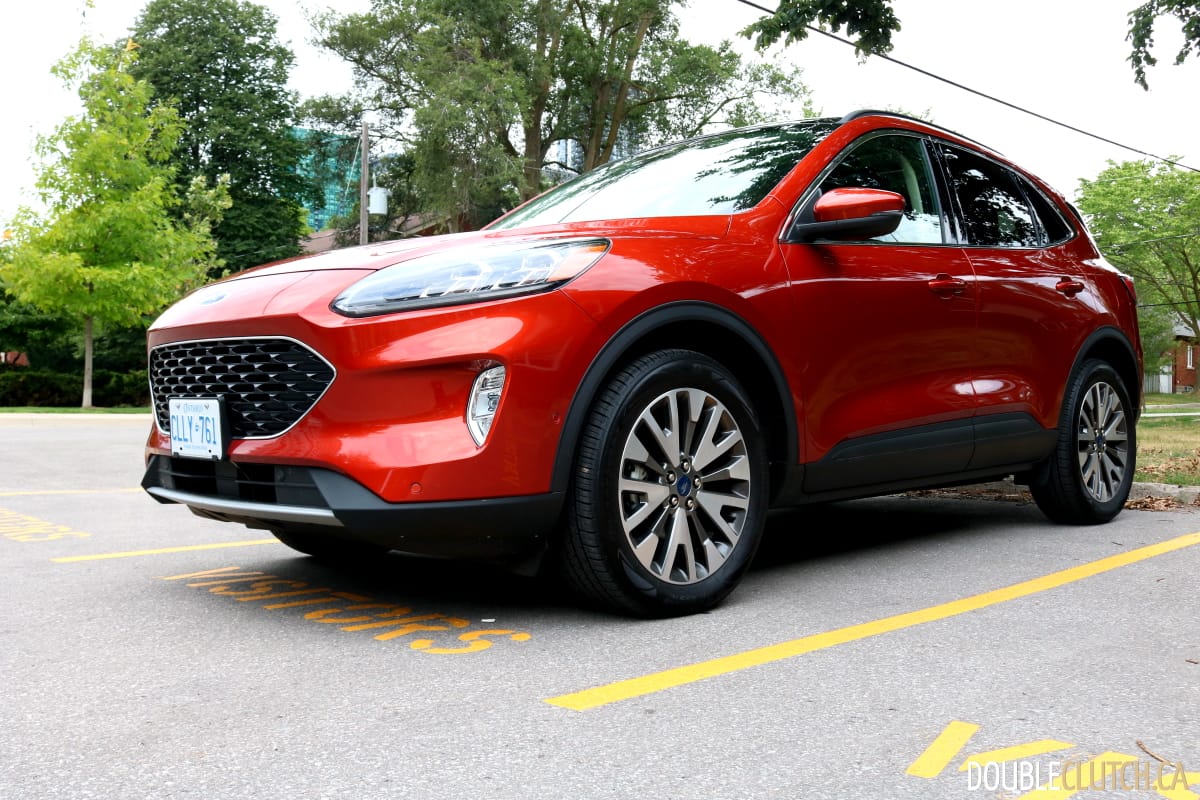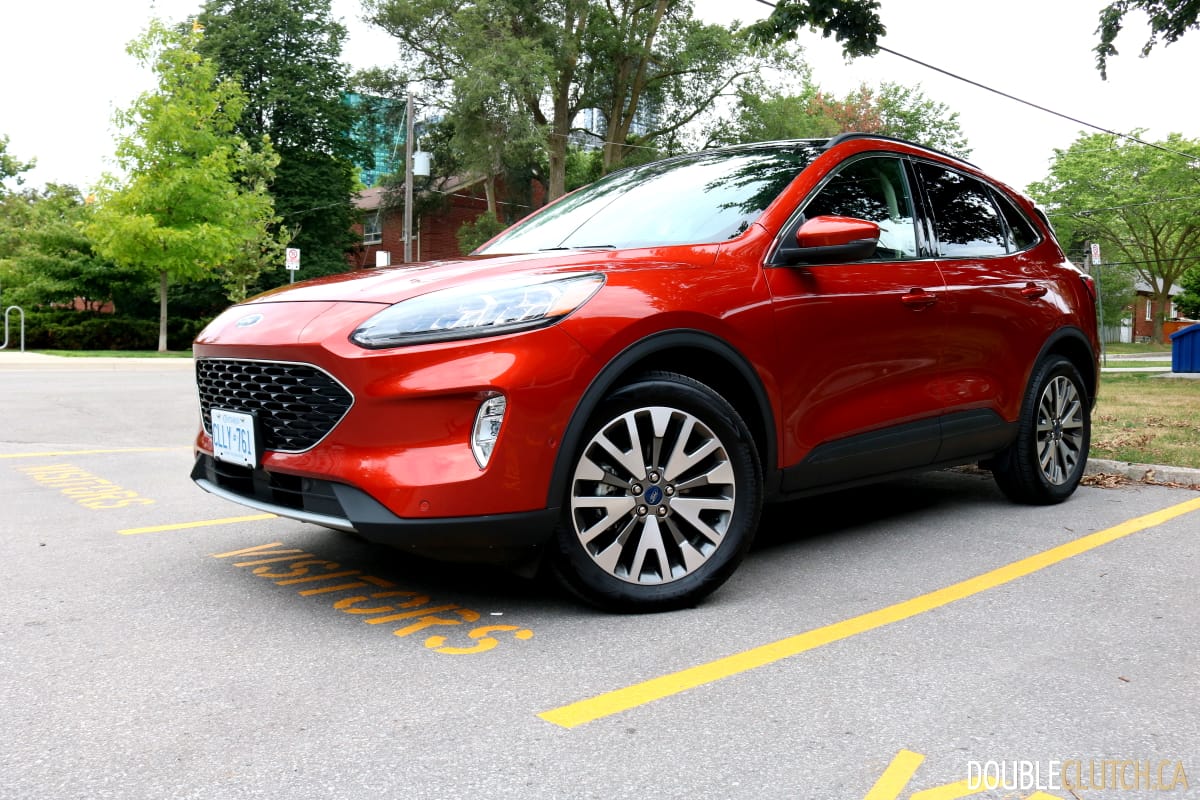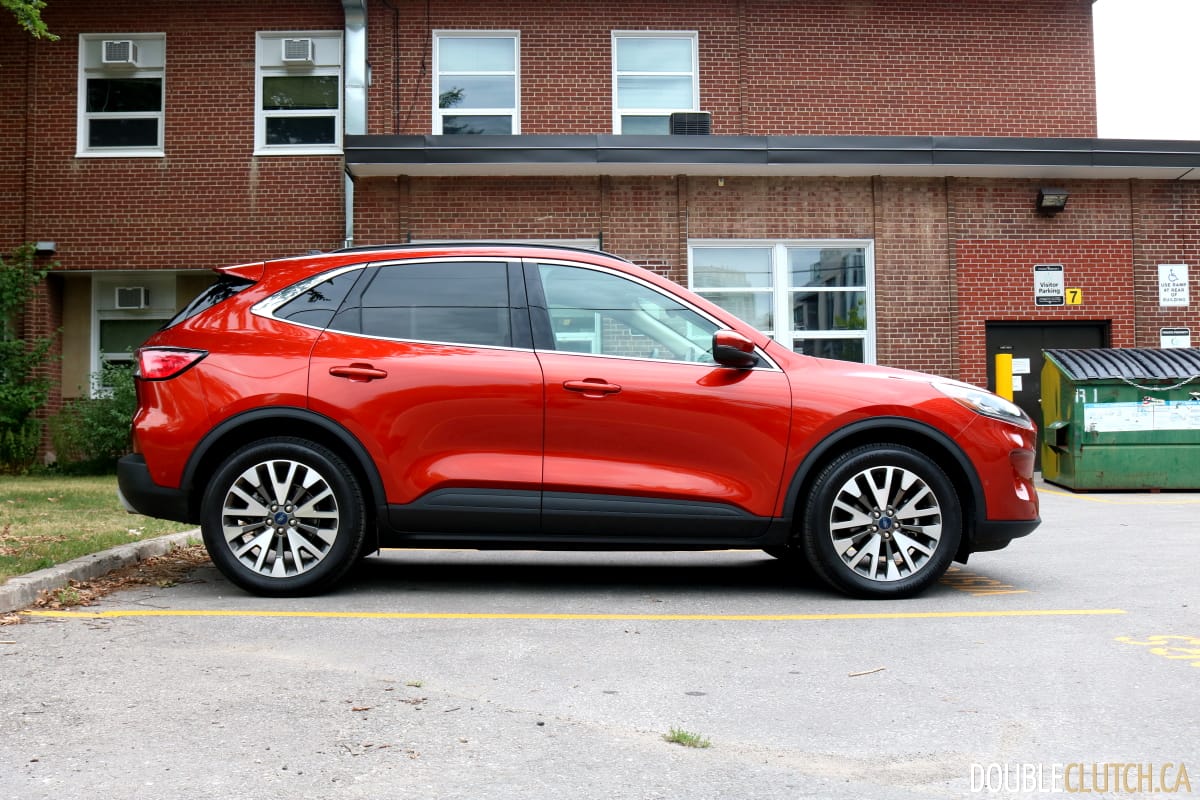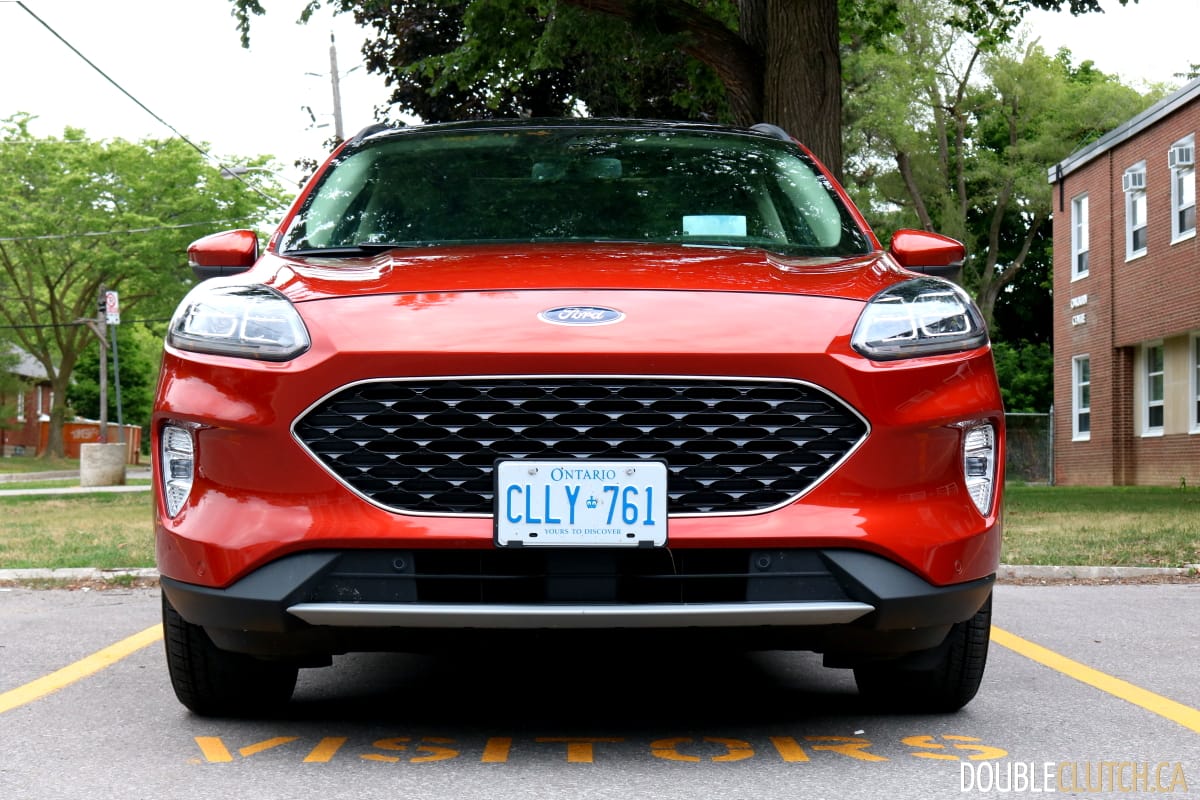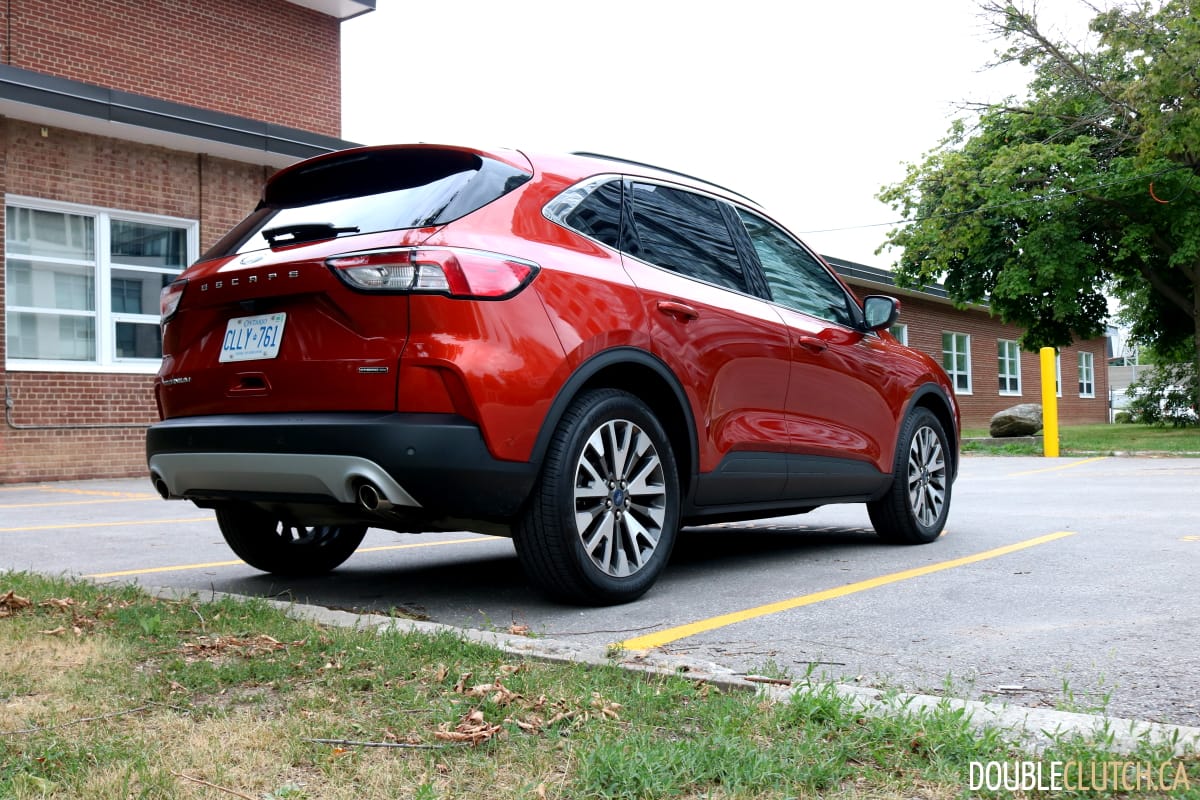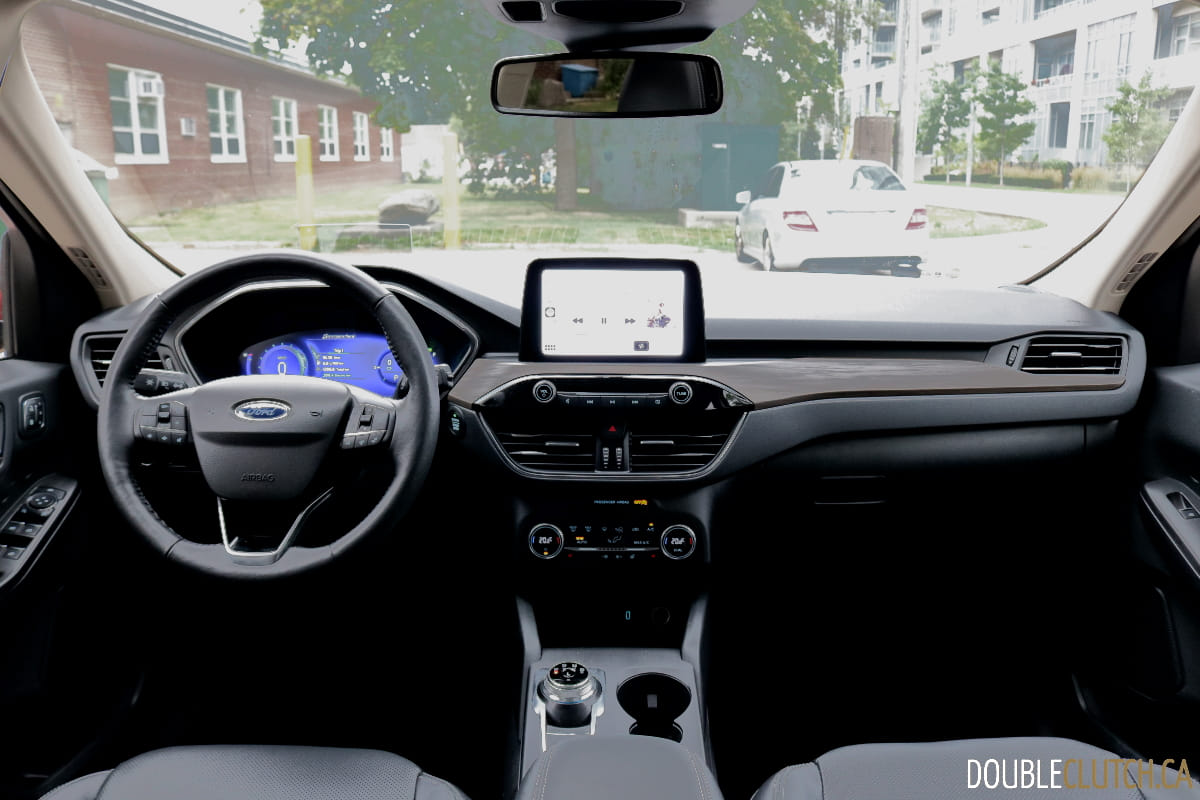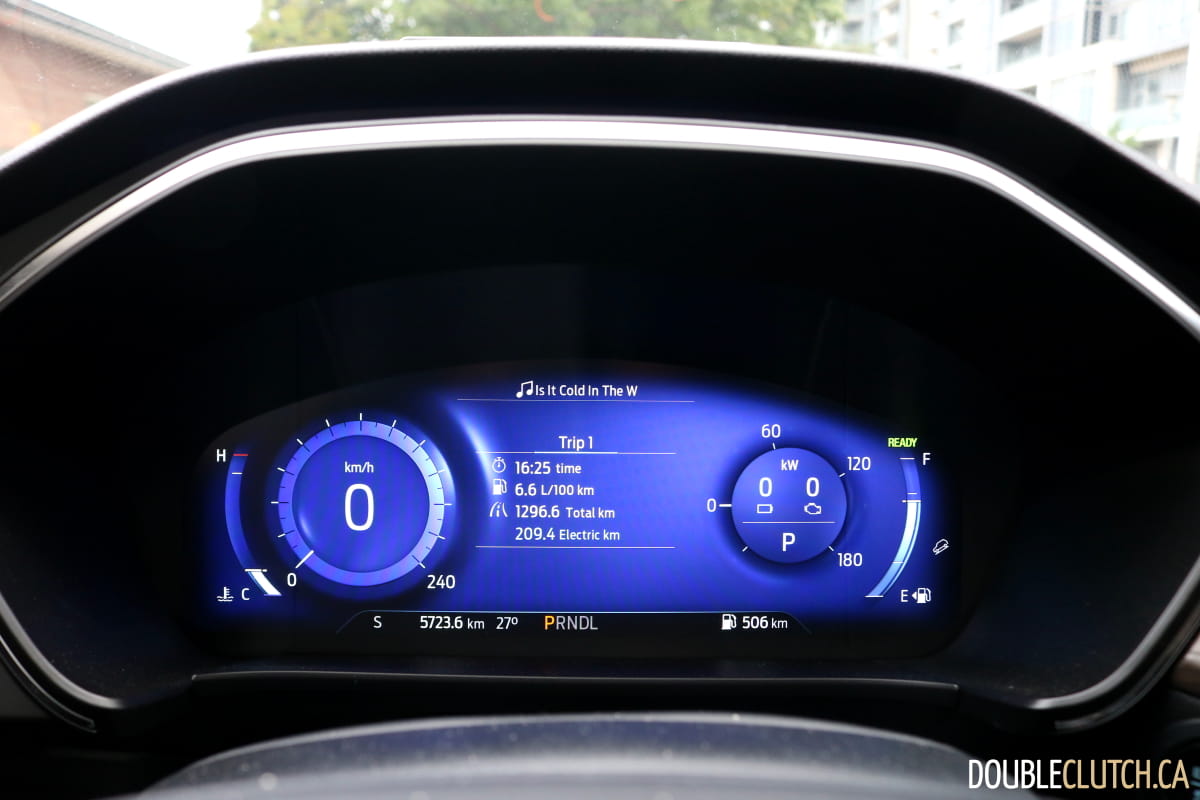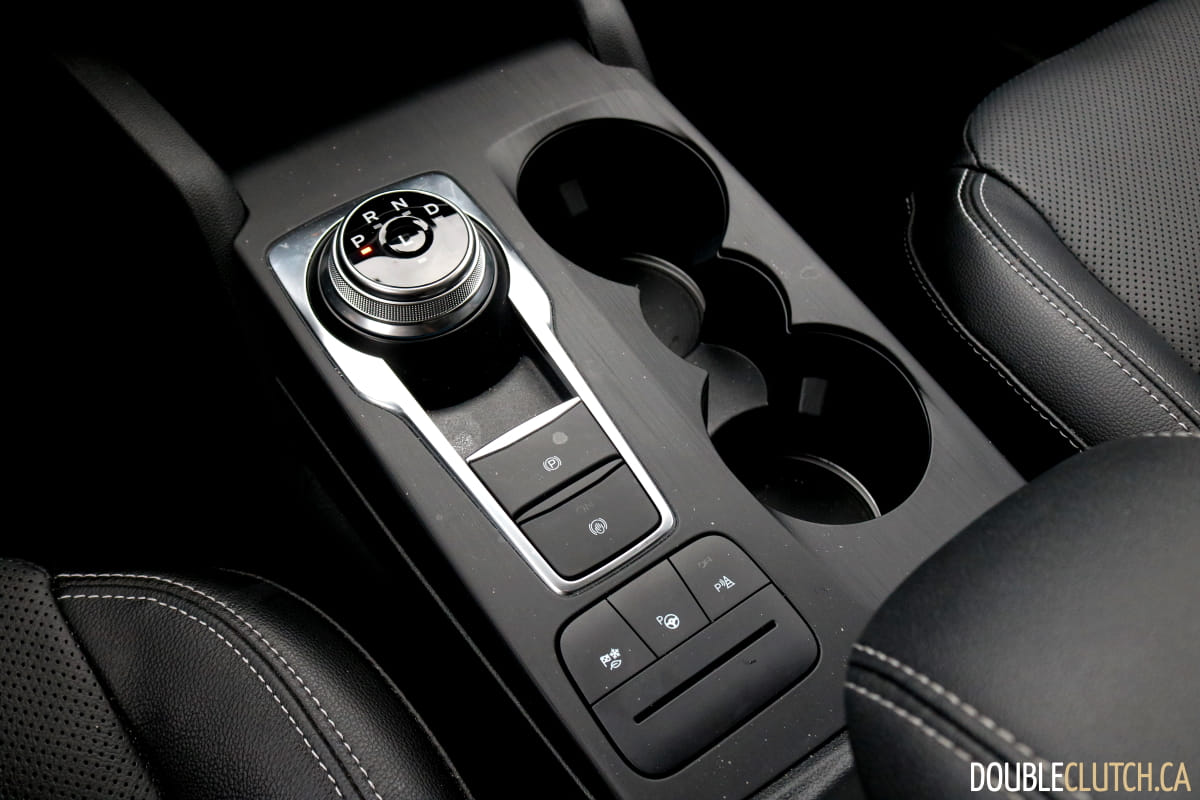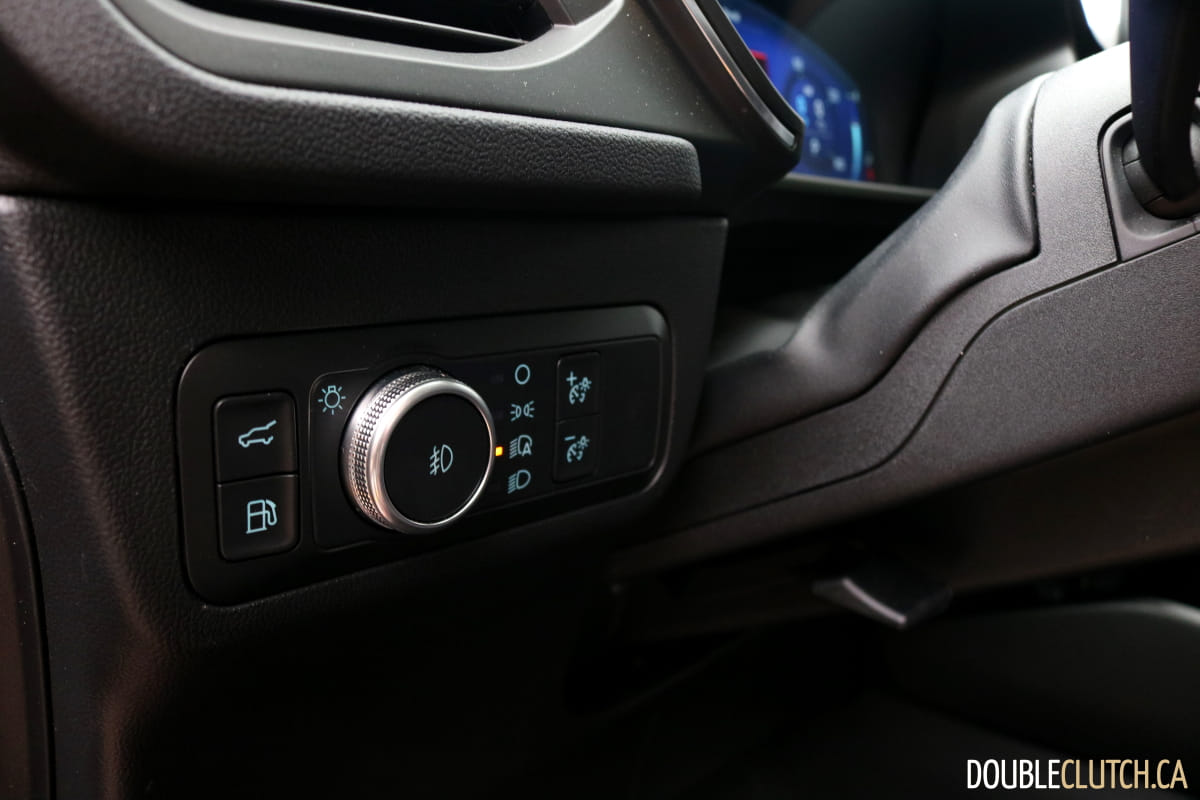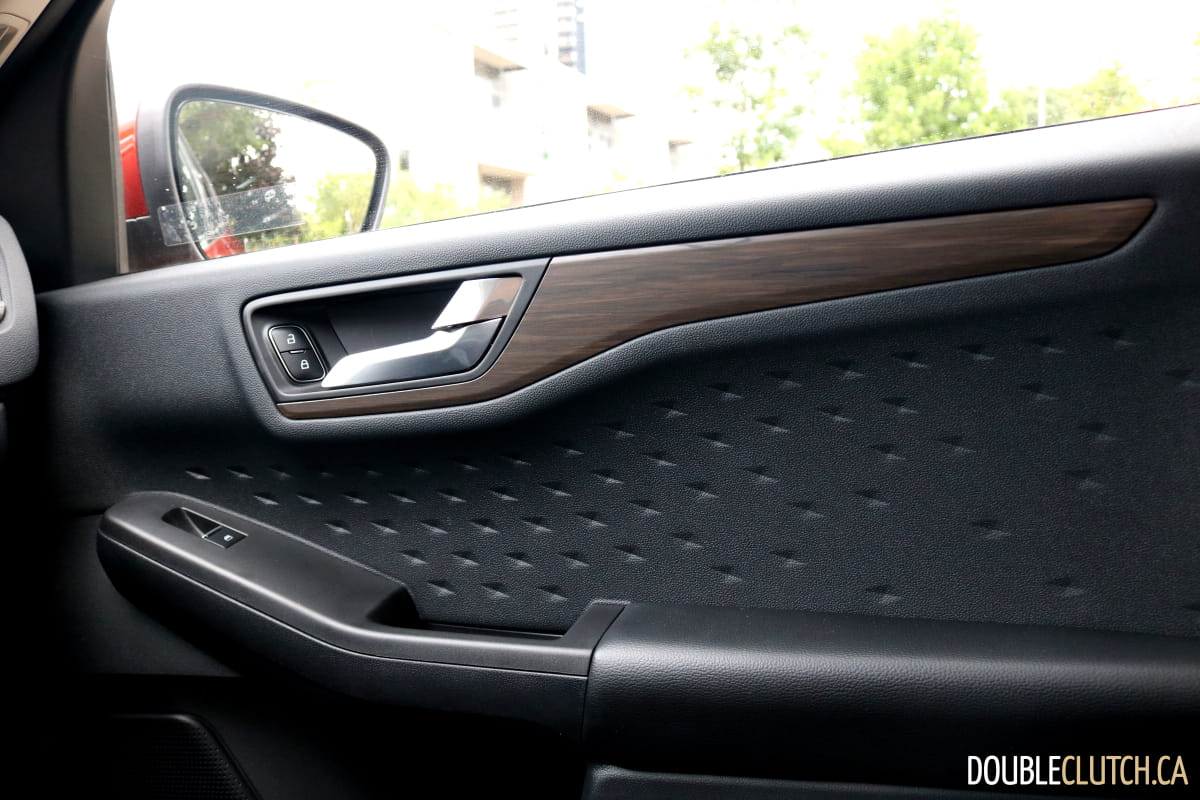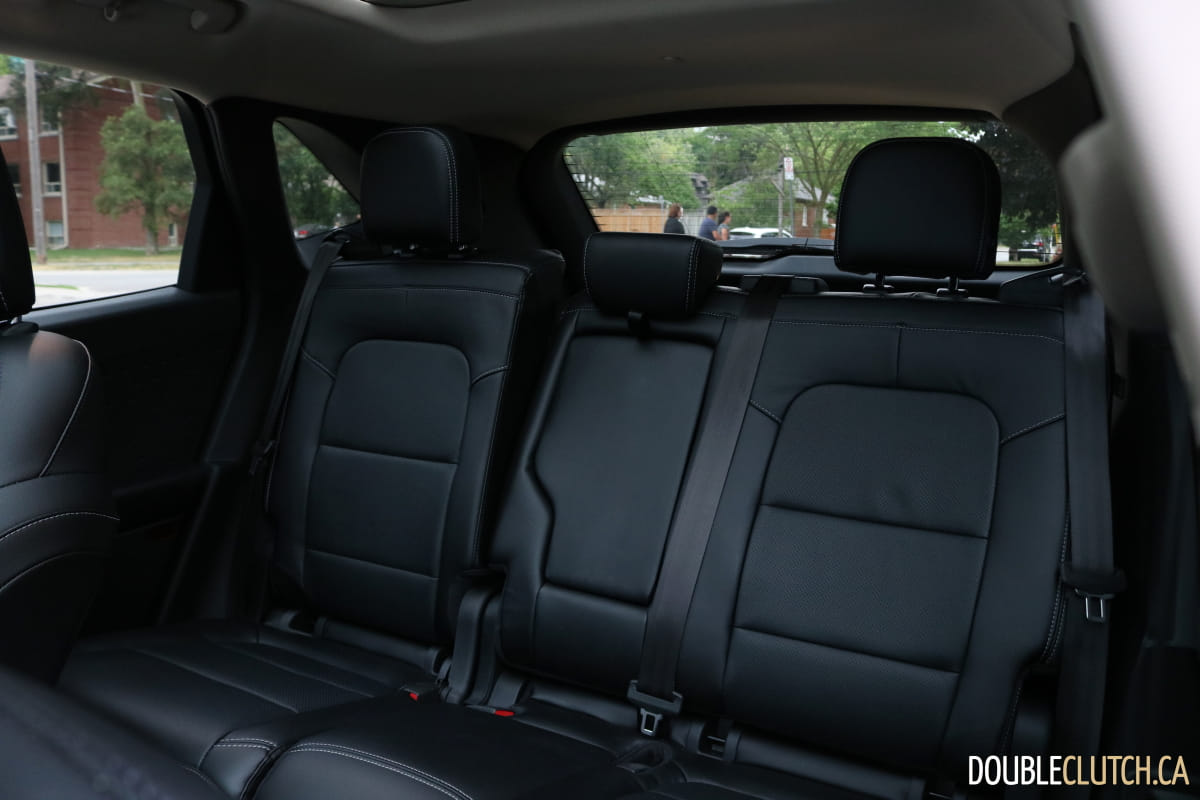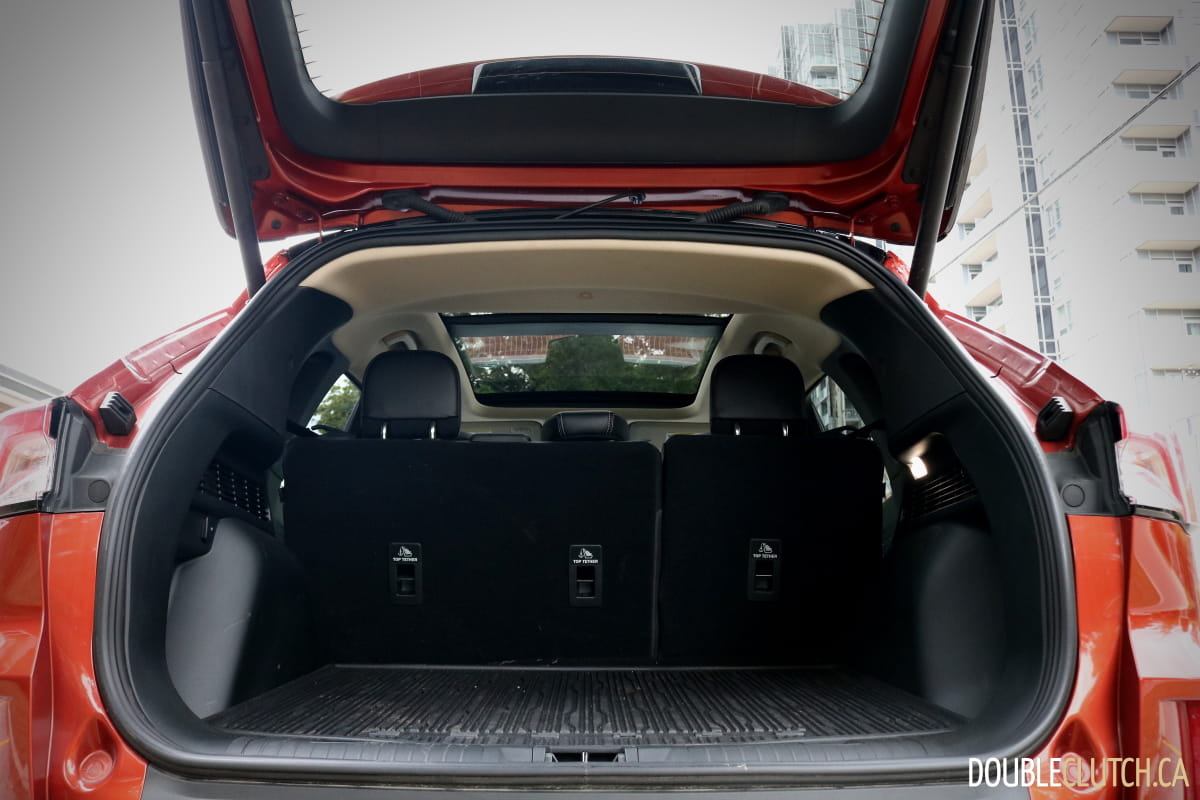“No more cars that aren’t Mustangs.” When Ford unveiled this plan to the North American market, people were shocked. While it’s fundamentally sound considering SUVs are more popular than cars and subject to more lax regulations than cars, Ford’s next generation of SUVs had to be really good to convince Focus and Fusion owners to trade up. We recently had a chance to test the brand new 2020 Ford Escape Hybrid Titanium and came away with mixed emotions.
The Escape Hybrid’s styling is a notable departure from the previous model. Its unconventional front fascia layout attempts to ape the Porsche Macan (reviewed here). After the front fenders the design gets a bit awkward with the very tall greenhouse somewhat clashing with the sloped front end. While a more defined beltline could have prevented the Escape from looking a bit stubby, it would’ve messed with what cohesion there is between the low, rounded front end and the more traditional side profile. The rear end again looks as if it’s been designed by a different team, but in this case it’s full of win. It’s quite upright which is a boon for on-paper cargo capacity. It’s also handsome with bold horizontal rear lamps aiding visual width, a tasteful font for the logo and an endearing lack of tacky flourishes. The sturdy separate aperture for the hatch release is another nice touch that’s likely to come in handy when wearing thick winter gloves.
Inside, the 2020 Ford Escape Hybrid Titanium is a bit of a mixed bag. The dashboard features some of the cheesiest fake wood this side of 1970s small appliances, but the funky pattern embossed into each door card more than makes up for it. Unfortunately the same can’t be said about the Escape’s steering wheel, upholstered in a grade of leather that must have a heavy urethane coating on it to give it a nasty plastic feel. Numerous fit-and-finish issues were also present on our test car including off-kilter steering wheel stitching that would’ve been rejected by any Asian or European automaker, headliner trim that wasn’t installed properly and gave a view of the left curtain airbag and excess fabric trim on the backs of the front seats that drew unfortunate comparisons to full diapers.
Still, the rear seat is very well-designed, a split-folding affair that slides and reclines to allow owners to choose the balance between cargo space and occupant comfort that works for them. Rear occupants also get a well-padded centre armrest with integrated cupholders, an optional 110-volt household outlet for device charging and reasonably capacious door bins. The power tailgate is reasonably swift in operation and the rear bumper is unpainted so it’s hard to scuff while loading and unloading items which is handy for those who value the utility part of sport utility vehicles.
Up front, the Escape features a well-designed centre console with two-and-a-half cupholders spaced well enough to accommodate two water bottles and a Red Bull all at once. The door armrests are quite well-padded and occupants can charge devices through a twelve-volt socket, a USB-A port and a USB-C port. Unfortunately the front seats themselves aren’t that great with unyielding cushions and a relative lack of mid-back support. They’re fine for shorter distances but sitting in the driver’s seat for four hours ranks somewhere between falling asleep on a park bench and attempting a cannonball run in Fred Flintstone’s daily driver. It’s a pity considering the wondrous array of in-cabin tech and amenities on offer.
Instead of traditional gauges, the Escape Hybrid features a crisp digital display with an optional additional heads-up display. The infotainment display is large, bright and brilliant with nice black levels and fantastic response. It also supports Apple CarPlay and Android Auto. Some kudos go to the Escape’s optional panoramic sunroof. It’s roughly the size of a typical college dorm room and brings heaps of light into the interior. One tech area that comes up a bit short is the B&O Play stereo. It’s really quite dreadful for a premium audio system, offering up loads of harmonic distortion and mediocre staging. Bass is blown-out, midrange is mediocre and treble is tinny and lacking definition.
The 2020 Ford Escape Hybrid’s powertrain is actually quite good. The Atkinson-cycle 2.5-litre inline-four is fairly refined and there’s minimal shudder when the gasoline engine kicks on. The electric motor and CVT combination are smooth and it’s easy to drive the Escape Hybrid on electric power alone at neighbourhood speeds thanks to the effective regenerative braking system and nuanced throttle pedal. Steering feel in the Escape is vague, but that’s par for the course in the compact crossover marketplace. Steering weight on the other hand is heavy but not particularly fluid giving a feeling of stiffness. Most consumers are likely to be indifferent toward it but it’s still an unusual trait worth noting.
What many aren’t likely to be indifferent about is the ride quality. Small road imperfections are often felt reverberating through the vehicle structure, an indicator that further chassis tuning is necessary to rival the body control of the Mazda CX-5, Toyota RAV4 (reviewed here) and Hyundai Tucson. A litany of noise issues are also present, most notably wind roar due to body panel fitment issues and tire roar over everything but the smoothest, freshest tarmac. It’s a rather exhausting vehicle to drive day-trip distance in which is unacceptable given its family-oriented mission statement. Fuel economy isn’t as great as the RAV4 Hybrid either, with 6.6 L/100km over our week of mostly highway testing which is noticeably off from the government’s combined rating of 5.9 L/100km.
The Escape’s CoPilot360 safety suite is great in theory but a bit unrefined in practice. While the adaptive cruise control’s speed modulation is quite deft, its selection and maintenance of following distances isn’t as dialed-in as current class-leading systems. While the adaptive cruise is still useful, the lane-keep assist does a poor job of detecting orange lane markers in construction zones, leading to uncouth behaviour ranging from ping-ponging between the dotted lines. It’s best to just turn lane-keep off and let it serve as proof that SAE Level 4 autonomy is a long ways off.
Compared to the Toyota RAV4 Hybrid and the Kia Niro Hybrid, the 2020 Ford Escape Hybrid Titanium doesn’t quite feel quite finished. While fundamentally sound and abundant in potential, it’s lacking in refinement and comfort in a way that’s hard to excuse for a price of $40,949 as-tested. Another six months to a year and Ford should be able to iron out the kinks to deliver a truly competitive product. Here’s hoping that a mid-cycle refresh turns the Escape Hybrid into the crossover it’s truly meant to be.






